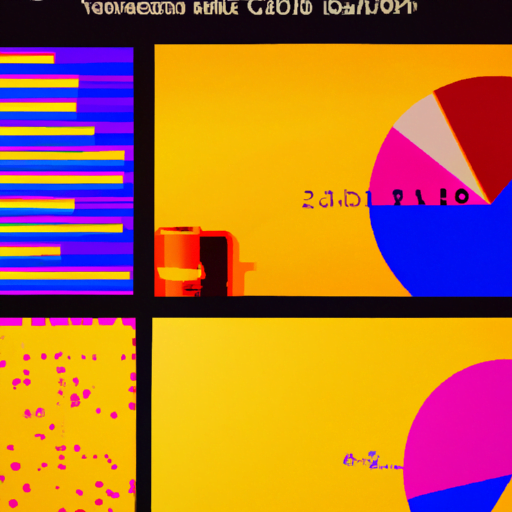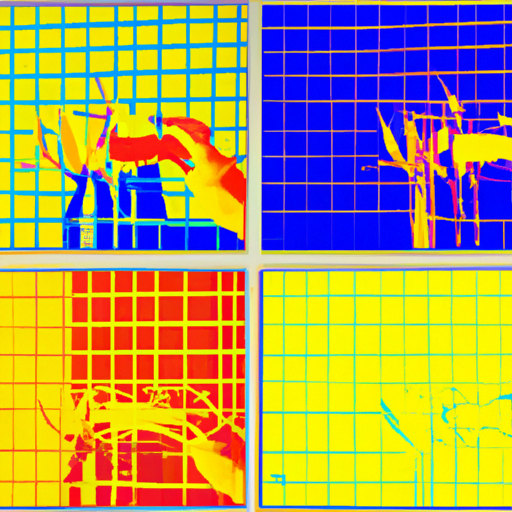
-
Table of Contents
The Role of Data Visualization in Graphic Design

Data visualization is a powerful tool that allows us to present complex information in a visually appealing and easily understandable way. In the field of graphic design, data visualization plays a crucial role in creating compelling and informative designs. This article explores the importance of data visualization in graphic design and how it enhances the communication of information.
1. Enhancing Understanding and Engagement
Data visualization helps to simplify complex data sets and make them more accessible to a wider audience. By presenting information in a visual format, designers can effectively communicate key insights and trends. For example, a bar chart or a line graph can quickly convey the growth of a company over time, making it easier for viewers to understand and engage with the data.
Case Study: The New York Times is known for its exceptional data visualizations. In their article “How Different Groups Spend Their Day,” they used interactive charts and graphs to showcase how people from different demographics spend their time. The visualizations not only made the data more digestible but also encouraged readers to explore the information further.
2. Increasing Memorability
Humans are visual creatures, and we tend to remember visual information better than text alone. By incorporating data visualization into graphic design, designers can create memorable experiences for viewers. When information is presented in a visually appealing and engaging way, it is more likely to leave a lasting impression.
Example: The infographic “The Evolution of the Web” by Vizzlo presents the history of the internet in a visually stunning and interactive format. The use of icons, colors, and illustrations not only makes the information more memorable but also adds an element of storytelling to the design.
3. Facilitating Decision Making
Data visualization can help individuals and organizations make informed decisions by presenting data in a clear and concise manner. By visualizing data, designers can highlight patterns, trends, and correlations that may not be immediately apparent in raw data.
Example: Tableau, a popular data visualization software, enables users to create interactive dashboards and reports. These visualizations allow businesses to analyze their data and make data-driven decisions. By presenting data in a visually appealing way, Tableau facilitates the decision-making process.
4. Building Trust and Credibility
When data is presented in a visually appealing and transparent manner, it enhances the credibility of the information. By using data visualization techniques, designers can create designs that are not only aesthetically pleasing but also trustworthy.
Case Study: The Gapminder Foundation, founded by Hans Rosling, is known for its data visualizations that challenge common misconceptions. In one of their famous TED Talks, Rosling used animated bubble charts to debunk myths about global development. The visualizations helped to build trust and credibility by presenting data in a transparent and engaging way.
5. Improving User Experience
Data visualization plays a crucial role in improving the user experience of digital products and websites. By presenting data in an interactive and visually appealing way, designers can engage users and make complex information more accessible.
Example: The weather app Dark Sky uses data visualization to present weather forecasts in a visually stunning and intuitive manner. The use of color-coded graphs and interactive maps allows users to quickly understand and navigate the information, enhancing their overall experience.
6. Inspiring Creativity
Data visualization is not only a tool for presenting information but also a source of inspiration for graphic designers. By exploring different data visualization techniques and styles, designers can push the boundaries of their creativity and create unique and impactful designs.
Example: The “Dear Data” project by Giorgia Lupi and Stefanie Posavec is a year-long data visualization project where the designers exchanged weekly postcards visualizing various aspects of their lives. The project not only inspired other designers but also showcased the creative potential of data visualization.
Summary
Data visualization plays a crucial role in graphic design by enhancing understanding, increasing memorability, facilitating decision making, building trust and credibility, improving user experience, and inspiring creativity. By incorporating data visualization techniques into their designs, graphic designers can create visually appealing and informative designs that effectively communicate complex information. Whether it’s through interactive charts, infographics, or interactive dashboards, data visualization empowers designers to present data in a way that engages and informs viewers.
